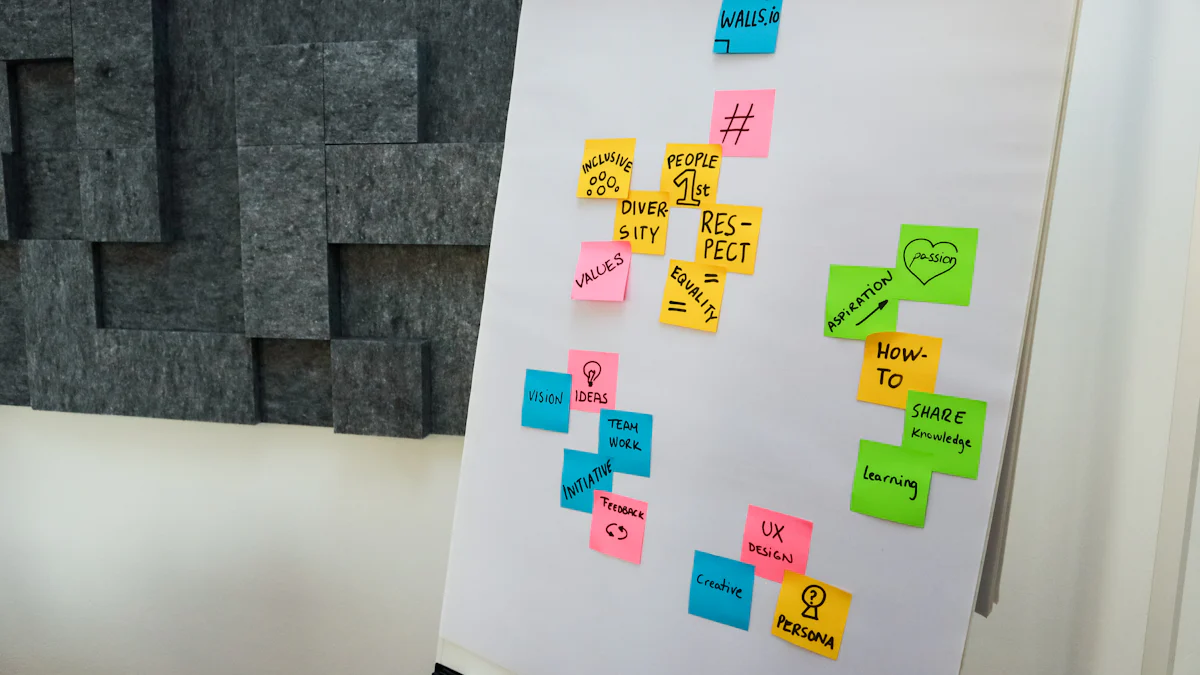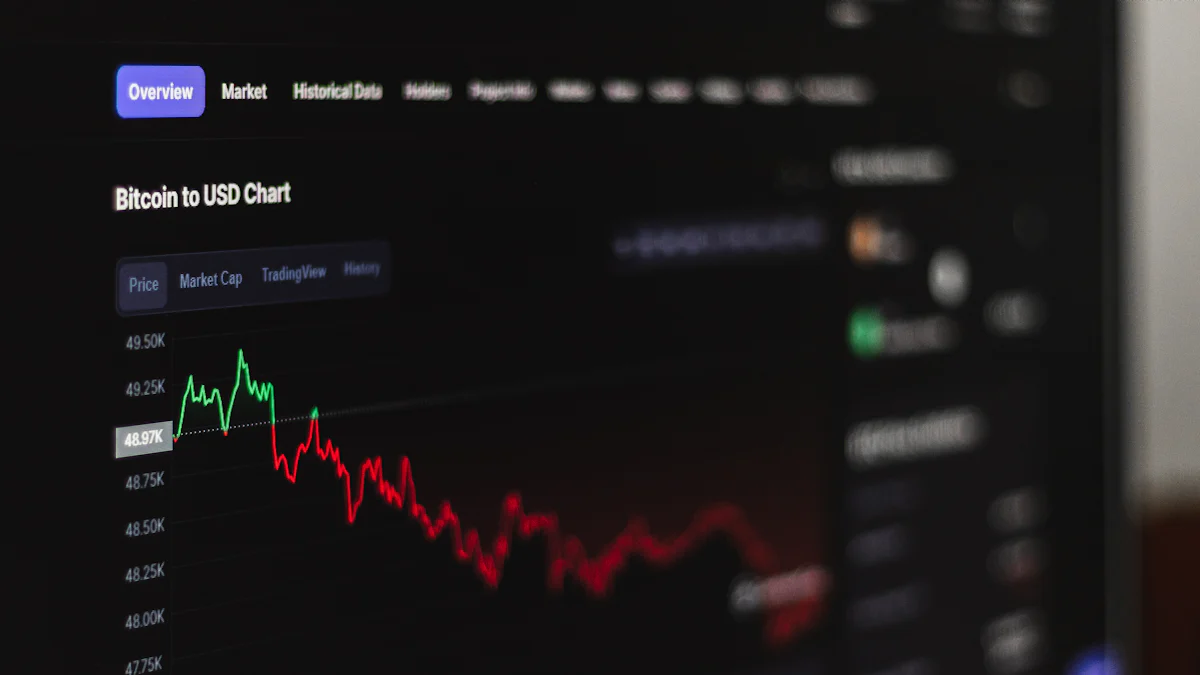


A PICK Chart serves as a powerful visual tool in project management, enabling teams to categorize and prioritize improvement ideas. By organizing tasks based on their ease of implementation and potential impact, it simplifies decision-making and optimizes resource allocation. This method not only aligns business needs with improvement initiatives but also enhances team discussions, leading to more effective feedback and reduced management burden. The intuitive nature of the PICK Chart makes it an invaluable asset for brainstorming and project planning, ultimately facilitating informed decision-making and consensus-building within teams.
Understanding the PICK Chart
Definition and Origin of PICK Chart
What is a PICK Chart?
A PICK Chart is a visual tool used to categorize and prioritize ideas based on their potential impact and ease of implementation. It helps teams make informed decisions by organizing tasks into four distinct quadrants: Possible, Implement, Challenge, and Kill. This method simplifies complex decision-making processes, making it easier for teams to focus on actions that offer the greatest benefits.
Historical Background
The PICK Chart was developed by Lockheed Martin as part of the Lean Six Sigma methodologies. It emerged as a solution to streamline the process of identifying and prioritizing improvement opportunities. By using a standard 2x2 grid, teams could efficiently sort and rank ideas, enhancing both project planning and execution.
Components of a PICK Chart
Possible
The "Possible" quadrant includes ideas that are easy to implement but have a low impact. These tasks can be considered for future projects or when resources allow. They often serve as quick wins that can boost team morale without requiring significant investment.
Implement
Ideas in the "Implement" quadrant are both easy to execute and have a high impact. These tasks should be prioritized as they offer the best return on investment. Implementing these ideas can lead to significant improvements in efficiency and effectiveness.
Challenge
The "Challenge" quadrant contains ideas that are difficult to implement but promise high impact. These tasks require careful consideration and planning. Teams may need to allocate additional resources or develop innovative solutions to overcome the challenges associated with these ideas.
Kill
Ideas that fall into the "Kill" quadrant are both difficult to implement and have low impact. These tasks should be avoided as they consume resources without providing substantial benefits. Eliminating these ideas helps teams focus on more promising opportunities.
Benefits of Using a PICK Chart
PICK Chart Prioritization
How it helps in decision-making
The PICK Chart serves as a vital tool for decision-making by categorizing tasks based on their impact and ease of implementation. This method allows teams to focus on high-impact actions that are easy to execute, ensuring efficient use of resources. Unlike other decision-making tools, the PICK Chart provides a clear visual representation, making it easier for teams to identify priorities quickly. By systematically organizing tasks, it transforms a complex list into manageable actions, enhancing clarity and focus.
Impact on project efficiency
Using a PICK Chart significantly boosts project efficiency. Teams can swiftly identify which tasks to implement, challenge, or eliminate. This prioritization reduces wasted effort on low-impact activities, allowing more time and resources for valuable projects. The visual nature of the PICK Chart aids in aligning team efforts with strategic goals, leading to improved workflow and productivity. It ensures that every team member understands the priorities, fostering a cohesive approach to project management.
PICK Chart Visualization
Simplifying complex data
The PICK Chart excels at simplifying complex data. By visually categorizing tasks, it breaks down intricate information into understandable segments. This simplification aids decision-makers in grasping the essential elements of a project without getting lost in details. The intuitive layout of the PICK Chart makes it accessible to all team members, regardless of their expertise, promoting inclusivity in decision-making processes.
Enhancing team collaboration
Collaboration thrives with the use of a PICK Chart. Its visual format encourages open discussions and consensus-building among team members. By providing a shared understanding of priorities, the PICK Chart fosters a collaborative environment where diverse perspectives are valued. Teams can engage in productive brainstorming sessions, using the chart to guide discussions and ensure alignment on objectives. This collaborative approach not only enhances team dynamics but also leads to more innovative solutions.
How to Create a PICK Chart

Creating a PICK Chart involves a systematic approach to ensure effective prioritization and decision-making. This section provides a step-by-step guide and explores various tools and resources that can aid in the creation of a PICK Chart.
Step-by-Step Guide of PICK Chart
Identifying tasks
The first step in creating a PICK Chart is identifying the tasks or ideas that need evaluation. Teams should gather all potential projects or improvements and list them comprehensively. This initial brainstorming session sets the foundation for further analysis and categorization.
Assessing impact and ease
Once the tasks are identified, the next step involves assessing each task's potential impact and ease of implementation. Teams should evaluate how significantly each task can affect the project or organization and how easily it can be executed. This assessment helps in determining the position of each task on the PICK Chart.
Plotting on the chart
After assessing the tasks, teams can plot them on the PICK Chart. The chart consists of four quadrants: Possible, Implement, Challenge, and Kill. Tasks are placed in these quadrants based on their assessed impact and ease. This visual representation allows teams to quickly identify which tasks to prioritize, which to consider for future projects, and which to eliminate.
Tools and Resources of PICK Chart
Software options
Several software options can facilitate the creation of a PICK Chart. Microsoft Excel offers flexibility and accessibility, allowing users to create weighted charts and integrate them with other project management methods. Lucidchart provides real-time collaboration features, making it ideal for teams working together remotely. Miro offers a virtual whiteboard experience, enhancing the brainstorming process for remote teams. Birdview Project Management Software simplifies the creation of PICK Charts, enabling project managers to focus discussions and achieve consensus efficiently.
Templates and examples
Various tools and software applications, such as Trello and specialized PICK Chart templates, offer convenient methods to create and manage lean PICK Charts. These tools provide customization options and facilitate collaborative input from team members. Templates and examples available online can serve as valuable references, helping teams understand how to effectively utilize a PICK Chart in different scenarios.
By following these steps and utilizing the right tools, teams can create a PICK Chart that enhances decision-making and prioritization. This method not only streamlines project management but also fosters a collaborative environment where team members can contribute effectively.
Applications of PICK Chart
In Business
Project management
Businesses use PICK Charts to streamline project management. Teams can prioritize tasks, allocate resources efficiently, and organize workflows. By categorizing tasks into Possible, Implement, Challenge, and Kill, they focus on high-impact actions. This method enhances decision-making and ensures that projects align with strategic goals. PICK Charts also facilitate team discussions, leading to consensus on the best solutions.
Strategic planning
Strategic planning benefits from the visual clarity of PICK Charts. Organizations identify and prioritize initiatives that promise the greatest return on investment. By evaluating potential impact and ease of implementation, they make informed decisions. This approach helps in setting clear objectives and aligning resources effectively. PICK Charts provide a structured way to visualize and compare strategic options, aiding in long-term planning.
In Personal Life
Time management
Individuals can apply PICK Charts to manage time more effectively. By categorizing daily tasks, they focus on activities that offer the most significant benefits. This method helps in identifying quick wins and avoiding time-consuming tasks with little payoff. The visual nature of the chart simplifies decision-making, making it easier to prioritize personal goals and responsibilities.
Goal setting
PICK Charts assist in setting and achieving personal goals. By organizing goals based on impact and feasibility, individuals create actionable plans. This structured approach encourages focus on meaningful objectives and helps in tracking progress. The chart provides a clear visual representation of priorities, motivating individuals to pursue goals that align with their values and aspirations.
Common Mistakes to Avoid in PICK Chart
Misjudging Impact
Overestimating Benefits
Teams often overestimate the benefits of certain ideas. They may assume that a task will yield significant results without thoroughly analyzing its potential impact. This mistake can lead to wasted resources on projects that do not deliver expected outcomes. To avoid this, teams should conduct a detailed assessment of each idea's potential benefits before categorizing it on the PICK Chart.
Underestimating Challenges
Underestimating the challenges associated with implementing an idea can also lead to problems. Teams might overlook the complexities involved, resulting in unexpected obstacles during execution. Proper evaluation of the effort required ensures that tasks are accurately placed on the chart. This careful analysis helps in identifying which ideas are truly feasible and worth pursuing.
Ignoring Team Input
Lack of Collaboration
A common mistake is neglecting team input during the creation of a PICK Chart. When decision-making lacks collaboration, it can lead to biased prioritization. Teams should encourage open discussions and involve all members in the process. This approach ensures that diverse perspectives are considered, leading to more balanced and effective decision-making.
Importance of Diverse Perspectives
Diverse perspectives play a crucial role in accurately assessing ideas. Ignoring these perspectives can result in a narrow view of potential solutions. By valuing input from all team members, organizations can uncover innovative ideas and avoid overlooking valuable opportunities. This inclusive approach enhances the overall effectiveness of the PICK Chart, ensuring that it serves as a reliable tool for prioritization and decision-making.
Real-World Examples of PICK Chart

Case Study 1
Example from a Tech Company
In the tech industry, a software development team utilized a PICK Chart to prioritize features and bug fixes. They categorized tasks based on impact and ease of implementation. This approach brought clarity to their development process. By focusing on high-impact, easy-to-implement tasks, the team streamlined workflows and identified quick wins. This method enhanced efficiency and ensured alignment with strategic goals.
Lessons Learned
The tech company learned the importance of visualizing priorities. The PICK Chart helped them make informed decisions quickly. It also fostered collaboration among team members, leading to innovative solutions. By using this tool, they improved project management and resource allocation.
Case Study 2
Example from Healthcare Industry
A large hospital network applied a PICK Chart to improve patient care initiatives. They visualized and prioritized improvement ideas, focusing on those with high impact and manageable implementation. This strategy led to a 20% increase in patient satisfaction scores within six months. The chart provided a clear framework for evaluating and ranking ideas.
Outcomes and Insights
The healthcare industry example highlighted the effectiveness of the PICK Chart in achieving tangible results. By categorizing ideas based on impact and difficulty, the hospital network made informed decisions that enhanced patient care. The tool facilitated consensus-building and encouraged diverse perspectives, leading to successful implementation of improvement initiatives.
Related Topics and Further Reading of PICK Chart
Other Prioritization Tools
Eisenhower Matrix
The Eisenhower Matrix is a time management tool that helps prioritize tasks based on urgency and importance. It divides tasks into four quadrants: urgent and important, important but not urgent, urgent but not important, and neither urgent nor important. This method aids in focusing on what truly matters, enhancing productivity and decision-making.
MoSCoW Method
The MoSCoW Method is a prioritization technique used in project management. It categorizes tasks into four groups: Must have, Should have, Could have, and Won't have. This approach helps teams identify essential requirements and allocate resources effectively, ensuring that critical tasks receive attention.
Recommended Books and Articles
"The Lean Six Sigma Pocket Toolbook"
"The Lean Six Sigma Pocket Toolbook" offers a comprehensive guide to Lean Six Sigma tools, including the PICK Chart. It provides practical insights into process improvement and prioritization techniques, making it a valuable resource for professionals seeking to enhance efficiency and effectiveness.
"Prioritization in Project Management: A Practical Guide"
"Prioritization in Project Management: A Practical Guide" explores various prioritization methods, including the PICK Chart. It offers strategies for effective decision-making and resource allocation, helping project managers streamline workflows and achieve project success.
The PICK Chart stands as a vital tool in project management, offering clarity and structure to decision-making processes. By categorizing tasks based on impact and ease, it enhances efficiency and collaboration. Teams can apply this method across various scenarios, from software development to personal goal setting. Its simplicity encourages open discussion and consensus-building, making it an essential asset for any team. Embracing the PICK Chart can lead to more informed decisions and streamlined workflows, ultimately driving success in both professional and personal endeavors.
FAQ
A PICK Chart is a visual tool used to categorize and prioritize ideas based on their impact and ease of implementation. It helps teams make informed decisions by organizing tasks into four quadrants: Possible, Implement, Challenge, and Kill.
The PICK Chart simplifies decision-making by visually mapping out tasks. Teams can quickly identify which initiatives to prioritize, defer, or eliminate. This method enhances clarity and focus, ensuring efficient resource allocation.
PICK Charts are widely used in project management, Lean Six Sigma, and various industries like healthcare and software development. They help prioritize tasks, streamline workflows, and align efforts with strategic goals.
Visual Prioritization: Offers a clear framework for evaluating ideas.
Efficient Resource Allocation: Focuses on high-impact actions.
Enhanced Collaboration: Encourages team discussions and consensus-building.
Yes, individuals can use PICK Charts for personal time management and goal setting. By categorizing daily tasks, they can focus on activities that offer significant benefits and avoid time-consuming tasks with little payoff.
Misjudging Impact: Overestimating benefits or underestimating challenges.
Ignoring Team Input: Failing to involve diverse perspectives can lead to biased prioritization.
Several software options, such as Microsoft Excel, Lucidchart, and Miro, facilitate the creation of PICK Charts. These tools offer features for collaboration and customization, making them ideal for both teams and individuals.
Continue Reading About PICK Chart
Data Analysis vs Data Analytics: What’s the Real Difference?
Data Analysis vs Data Analytics: What’s the Difference? Discover How One Interprets History While the Other Shapes Tomorrow. Explore Here!
Lewis
Mar 10, 2025
Dynamic Dashboard: A Game Changer for Data Analysis
Dynamic dashboard revolutionize data analysis with real-time insights, customization, and improved decision-making. Explore their impact and future trends.
Lewis
Oct 11, 2024
Explore the Best Data Visualization Projects of 2025
Discover 2025's top data visualization projects that transform data into insights, enhancing decision-making across industries with innovative tools.
Lewis
Nov 25, 2024


